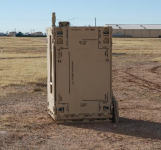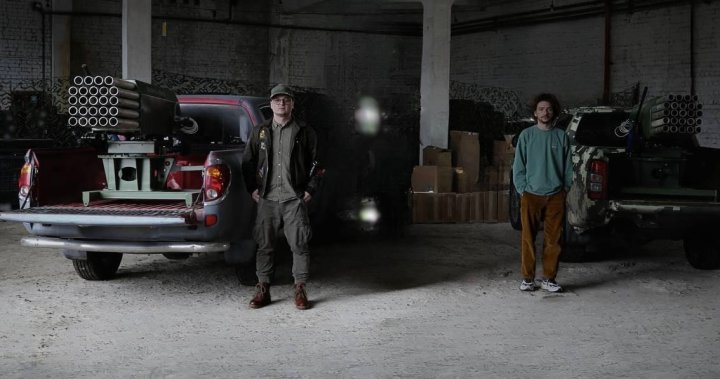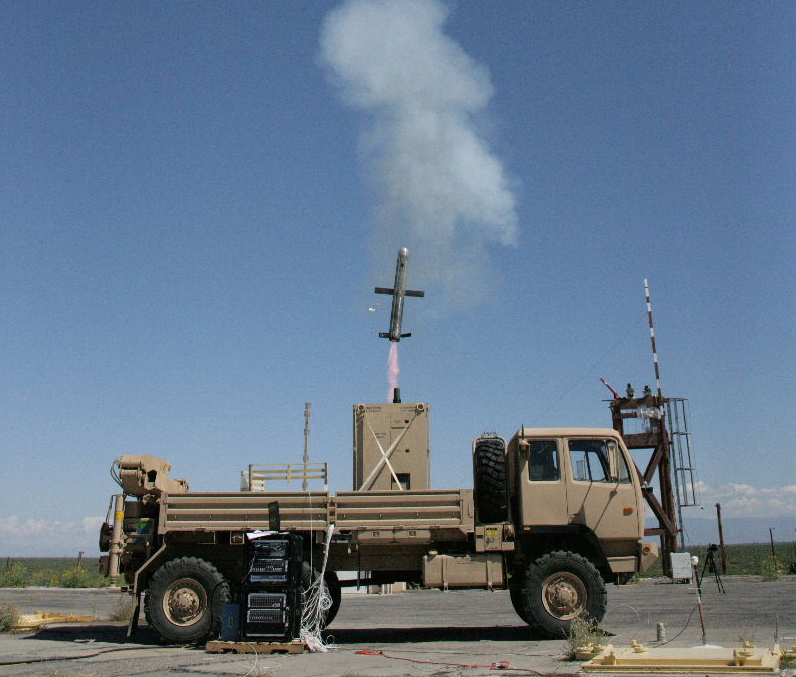I think we might be approaching each other cautiously here... I shall continue cautiously.

Fine, I disagree in the last point. It’s just a weapon that’s employed by different levels largely the same way. I haven’t seen anything on Ukrainian MG platoons existing but maybe I’ll dig a bit.
I'll stipulate that I can tend towards hyperbole. Having said that some levels, are using the MG from the hip while in motion while others tend to use it from static positions on a tripod. Sometimes the guns are employed individually while sometimes they are massed. And sometimes the same guns that are issued individually can be employed en masse.
With respect to the Ukrainians and the MG, I don't know about the MG platoons but they do seem to rely on their MGs to hold their positions. To the extent that they are employing both fixed and mobile remote MGs in their trenches. Along with their ATGMs
Agreed, my point is that having that forward edge as the contributor to all those linked systems and targeting is going to attack their OODA loops. If we go back to the genesis of what we were talking about its dedicated platoon vs giving everyone the thing.
But if the same CLU is employable as both an LOS and a Non-LOS system would that be a reason to deny the Javelin to the FEBA troops? Or would it be a reason to buy one missile system and issue it to rifle sections as well as the platoon weapons section or company weapons platoon?
Back to the C6/GPMG analogy. On bipods and slings in the section but tripods in the support elements.
An all arms call for fire. But I’d hope you’d have sent it when they were a km or 5 out.
Unless it is a meeting engagement in a coulee.
Again this was about your assertion that it’s quicker to make drones than bombs. Not that it’s quicker to make drones that artillery pieces. I’m simply pointing that out. You still need to make the bomb. And drones aren’t going to replace artillery, not until they can provide consistent suppression anyways.
If that is the way that I phrased my argument then I apologize. My assertion is that the supply chain for the shells and their launchers made out of steel is more complex than the equivalent supply chain for missiles and UAVs made from plastics, fibers and soft metals, all of which can be printed.
And the route to consistent suppression is large number of munitions, either shells or drones. In the case of the shells you need to deliver a large cache of shells to a gun with a crew and expose the crew to enemy fire while launching them. In the case of the "drones" you deliver the cache of drones to a site in a ready to launch container. You didn't have to buy the gun, or the gun tractor, or the spare barrel or the crew or its rations.
As to the cost of the munition itself,
The shell rises through the $1,000 ball park for the a dumb M107, to $10,000 for dumb shell with a low cost precision guidance kit to something in the $50,000 to $100,000 for exquisites like Excalibur and Vulcanos and, potentially, hypervelocity ramjet rounds.
Meanwhile missiles and UAVs are moving downwards in cost after they started in the 5 to 6 zero range and are now moving down towards the 3 to 4 zero range.
The howitzer is to the drone as the Tommy Gun was to the Sten Gun.



The cost is not the unit cost. It is the cost of delivery.
No you still do. Different jobs.
We will continue to disagree on that one, I think.
Do then Ukrainians want them? I seems more like a group of people trying to push them on Ukrain than anything else.
Apparently the guy running the drone fleets and the Kraken units wants them.
A Ukrainian military leader is asking Canada to hand over tens of thousands of rockets that are awaiting demolition at a Saskatchewan military base.
In an exclusive interview with Global News, Lieutenant General Kyrylo Budanov urged the government to let
Ukraine have the decommissioned CRV7 rockets.
Doing so would help Ukraine fend off Russian forces and save taxpayers the cost of destroying them, said Lt. Gen. Budanov, chief of the Ukrainian defence ministry’s
intelligence directorate.
Ukraine is asking the Canadian government for 83,000 mothballed CRV7 attack rockets to meet urgent military needs. Ottawa is concerned the rockets may be unsafe to ship.

globalnews.ca
There will always be an upper limit, and a lot of those assets will mean that rifle man X isn’t using his rifle to take and hold ground.
The rifleman might be better served with the rifle to take ground, assuming that bunkers don't need to be busted and enemy tanks aren't in evidence, but having the ATGMs in the section might be useful in holding the ground in the face of an enemy counter-attack during the re-org.
That’s a miss characterization I think. Tank hunting teams were employed, but describing the Ukrainian defence in those terms is largely incorrect. But we’ve been down this road before.
I give the Ukrainian artillery its due. It did the killing. However the ATGM teams complicated the ability of the Russian forces to manoeuvre, slowed them down and created concentrations for the artillery to neutralize.
And you are right, we have been down that road before.
Cheers.









